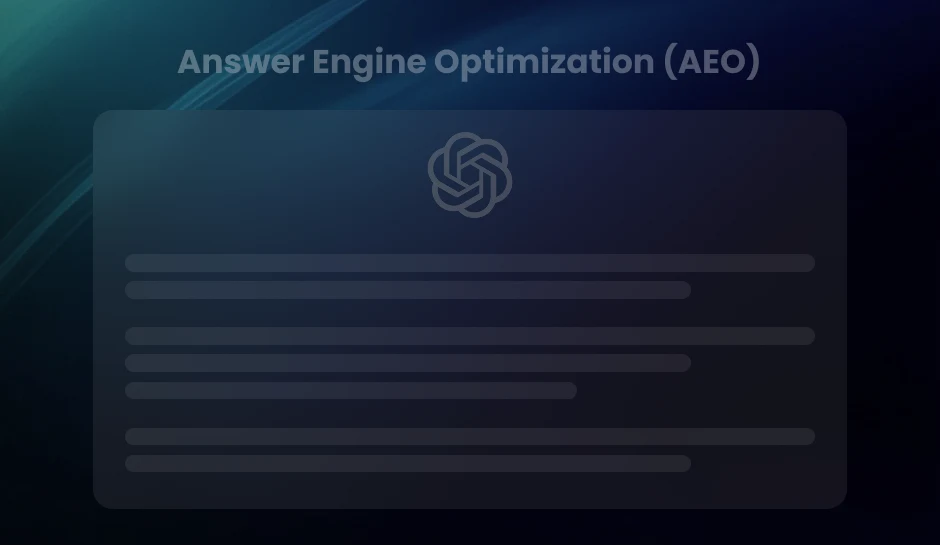
Adobe Analytics AI Features: Unlocking Predictive Power for Businesses
Adobe Analytics AI features empower businesses with advanced machine learning to automate insights, detect anomalies, and optimize marketing strategies. From predictive analytics to intelligent alerts, discover how AI transforms data into actionable decisions in real-time.
Adobe Analytics integrates advanced machine learning algorithms to refine data analysis, automate pattern recognition, and enhance decision-making. These AI-driven capabilities allow businesses to move beyond historical data, using predictive analytics to accurately forecast trends and customer behaviors.
The platform’s predictive analytics suite includes anomaly detection, propensity scoring, and automated segmentation features. Businesses gain the ability to anticipate customer needs, optimize marketing efforts, and allocate resources more efficiently. Adobe Sensei, the AI framework behind these capabilities, continuously learns from new data, improving prediction accuracy over time.
For organizations requiring specialized insights, Adobe Analytics supports custom model creation. Data scientists can develop tailored machine learning models, training them on specific datasets to address unique business challenges. This flexibility ensures deep, industry-specific predictive analysis, empowering companies to make data-driven decisions with confidence.
Anomaly Detection: Identifying Unusual Data Patterns Instantly
Adobe Analytics integrates anomaly detection to pinpoint irregularities in data patterns. This feature applies machine learning algorithms to historical data, identifying trends and predicting expected values. When actual data deviates significantly from these forecasts, the system flags it as an anomaly.
Recognizing Unusual Deviations in Data
These automated comparisons allow businesses to detect unexpected fluctuations in metrics such as website traffic, conversion rates, or customer engagement. Instead of manually reviewing vast datasets, users receive instant insights into deviations that may indicate technical issues, campaign performance shifts, or external market changes.
Timely Alerts for Immediate Action
Anomaly detection doesn’t just highlight unexpected variations also enables rapid responses. When a website experiences an unforeseen traffic surge or a sudden drop in sales, Adobe Analytics issues alerts, allowing teams to take immediate corrective action. Businesses can respond to potential revenue losses, investigate sudden user behavior changes, or optimize marketing strategies without delay.
- If a promotional campaign unexpectedly underperforms, marketers can quickly adjust their messaging, budget, or targeting.
- A spike in user sessions may indicate media coverage or viral content, guiding businesses to capitalize on newfound attention.
- Significant drops in engagement rates may signal technical problems, prompting IT teams to resolve issues before they escalate.
By automating anomaly detection, Adobe Analytics reduces the need for manual data reviews and accelerates decision-making. Instead of waiting for performance reports, teams access real-time insights and stay ahead of potential disruptions.
Pro Tip- Enable automated alerts for anomaly detection to receive instant notifications on unexpected data shifts, allowing your team to react swiftly and prevent potential revenue losses.
Uncovering What Drives Change with Contribution Analysis in Adobe Analytics AI
Adobe Analytics AI integrates Contribution Analysis to identify the key factors influencing fluctuations in data trends. Instead of relying on manual investigation, businesses can pinpoint the most significant contributors to observed changes with precision.
How Contribution Analysis Works
When a metric experiences an unexpected spike or drop, Contribution Analysis scans vast datasets to determine the underlying reasons. It evaluates multiple dimensions-including traffic sources, customer segments, product categories, and marketing channels-to isolate the primary drivers of change.
- Automated Correlation Detection: AI-powered algorithms analyze patterns across different variables and detect correlations that human analysts might overlook.
- High-Impact Segments Identification: The system ranks contributing factors by significance, helping analysts focus on the most influential segments.
- Real-Time Insights: Users receive immediate feedback on data shifts, enabling faster and more informed decision-making.
A Deeper Understanding of Customer Behavior and Business Impact
By identifying what drives certain behaviors, businesses can optimize their strategies. For example, if Contribution Analysis highlights that a sudden drop in conversions is linked to mobile site performance issues, teams can respond quickly to fix the problem.
Marketing teams benefit by assessing which campaigns influenced traffic surges. Understanding these correlations leads to improved ad targeting, content personalization, and budget allocation. Additionally, product teams gain clarity on how feature changes, price adjustments, or seasonal factors impact user engagement and revenue.
Adobe Analytics AI delivers Contribution Analysis as an ongoing, adaptive tool, continuously refining its results as more data flows into the system. This ensures that decision-makers work with relevant, up-to-date information tailored to evolving business conditions.
Pro Tip- Use Contribution Analysis to uncover hidden drivers behind data fluctuations, helping you fine-tune marketing strategies, optimize customer experiences, and make data-backed business decisions faster.
Intelligent Alerts: Real-Time Monitoring for Data-Driven Decisions
Adobe Analytics includes an Intelligent Alerts system that continuously monitors key metrics and data points. This system enables users to configure automatic notifications when significant deviations occur, reducing the need for manual oversight.
Custom Alerts for Precision Monitoring
Users can define rules specifying which metrics to track and the thresholds that trigger an alert. The system allows customization by:
- Setting absolute or percentage-based thresholds for changes.
- Defining specific segments, time ranges, or comparison periods.
- Configuring alert delivery via email or dashboard notifications.
This flexibility ensures that teams receive updates tailored to their unique business needs.
Enhancing Business Agility Through Instant Awareness
Real-time alerts provide immediate notification of critical shifts in data. Whether a sudden drop in conversion rates, an unexpected spike in traffic, or anomalies in customer behavior, the system ensures swift response times. By integrating these alerts into workflows, businesses can:
- React quickly to performance fluctuations.
- Investigate potential issues before they escalate.
- Optimize campaigns based on live insights.
With Intelligent Alerts, teams maintain control over their analytics environment without constantly monitoring dashboards, allowing them to focus on strategy and execution.
Pro Tip- Set up Intelligent Alerts with customized thresholds to detect critical data shifts instantly—ensuring timely action and keeping your business ahead of potential disruptions.
Segment Discovery and Comparison
Adobe Analytics uses AI-powered tools to uncover customer segments based on behavioral data, demographics, and interactions. The system analyzes vast datasets in real-time, distinguishing meaningful patterns that might go unnoticed with manual methods. This automated identification helps businesses refine targeting strategies and enhance personalization efforts.
AI-Driven Segment Identification
Adobe Analytics AI evaluates customer data to discover high-value segments. By examining behaviors, purchase patterns, and engagement metrics, the system classifies users into distinct groups. Machine learning algorithms detect correlations, identifying characteristics that predict customer lifetime value, churn probability, and engagement levels.
- Analyzes interactions across digital properties to find commonalities.
- Clusters users based on similarities without predefined rules.
- Refreshes segments dynamically as new data emerges.
Comparing Customer Segments
Beyond discovery, Adobe Analytics enables direct segment comparisons. AI evaluates differences in engagement, purchase behavior, and retention rates, providing actionable insights. Marketers can test segment preferences, refine messaging, and optimize campaigns by understanding these contrasts.
- Identifies high-value versus low-value customers.
- Reveals behavioral differences across demographics.
- Supports A/B testing by analyzing segment reactions.
Enhancing Targeting and Personalization
Understanding segment behaviors allows businesses to deliver personalized experiences. AI-driven insights inform tailored content, product recommendations, and messaging strategies. When marketers align outreach to user preferences, engagement, and conversion rates increase.
Adobe Analytics integrates these findings seamlessly into marketing workflows, automating personalization efforts. With AI continuously refining segments, businesses maintain relevance as customer behaviors shift over time.
Pro Tip- Leverage AI-powered segment discovery to uncover hidden customer patterns—then refine personalization strategies to maximize engagement and conversions.
Attribution Modeling: Decoding Marketing Effectiveness with AI
Attribution modeling in Adobe Analytics transforms raw data into actionable marketing insights. AI-driven capabilities break down the impact of each touchpoint in a customer’s journey, ensuring marketers allocate resources to the channels that drive real conversions.
AI-Powered Attribution for Deeper Insights
Traditional attribution models rely on predefined rules, often oversimplifying the complexity of multi-channel interactions. Adobe Analytics integrates artificial intelligence to remove guesswork, dynamically analyzing data patterns to identify high-performing channels and touchpoints. The AI-powered attribution features include:
- Algorithmic Attribution: Machine learning assesses historical interactions, assigning credit based on statistically significant correlations to conversions.
- Custom Weighting: Adjustments to attribution models reflect business priorities, ensuring marketing investments align with revenue contributions.
- Cross-Device Tracking: AI connects touchpoints across multiple devices, reconstructing user journeys for an accurate attribution measurement.
- Automated Model Comparison: Businesses test multiple attribution models simultaneously, identifying the one that most accurately represents customer conversions.
Customization for Unique Sales Cycles
Every business follows a distinct customer journey. Adobe Analytics allows companies to design bespoke attribution models tailored to their industry, sales cycle length, and customer engagement trends. Whether adjusting time decay factors or emphasizing specific interactions, marketers refine attribution logic to align with real-world behaviors.
AI also enhances real-time adaptability. If customer behavior shifts due to external factors, attribution models adjust dynamically, preventing outdated assumptions from distorting insights. This adaptability ensures marketing strategies remain responsive and data-driven.
Optimizing Marketing Spend with Data-Backed Decisions
Accurate attribution fuels smarter budget allocation. AI reveals which channels drive the highest return on investment, enabling businesses to shift spending toward high-performing campaigns. By eliminating wasted ad spend on underperforming channels and focusing on the most effective touchpoints, marketers maximize efficiency while enhancing customer experiences.
Pro Tip- Use AI-driven attribution models to uncover hidden high-performing channels and optimize marketing spend—boosting ROI with data-backed decisions.
Natural Language Processing (NLP) Interface in Adobe Analytics
Adobe Analytics integrates a Natural Language Processing (NLP) interface that transforms how users interact with data. Instead of navigating complex dashboards or writing queries, users can type or speak questions in plain language and receive instant insights. This approach removes technical barriers and speeds up data exploration.
Simplified Data Analysis Through Conversational Queries
Traditional analytics tools often require knowledge of specific query languages or filtering techniques. The NLP interface eliminates this requirement by interpreting natural language questions and translating them into actionable queries. A user can ask, “What was the conversion rate last quarter?” and get precise data without navigating multiple reports.
The system detects intent, recognizes context, and refines queries dynamically. If ambiguity exists, it prompts clarifications to ensure accuracy. This adaptive approach improves query efficiency and minimizes errors in data interpretation.
Enhancing Accessibility for Non-Technical Users
Data analysis shouldn’t be restricted to analysts and data scientists. The NLP interface allows marketers, product managers, and executives to extract insights without specialized training. Whether tracking campaign performance or identifying emerging trends, users gain immediate access to essential metrics.
- Faster decision-making: Reduces the time spent on navigating reports and dashboards.
- More inclusive analytics: Empowers teams without technical expertise to engage with data directly.
- Improved user experience: Intuitive interface minimizes learning curves and boosts adoption rates.
The NLP interface in Adobe Analytics streamlines complex data queries, making analytics more accessible across all business functions. This advancement ensures that organizations harness data-driven insights without requiring technical proficiency.
Pro Tip- Leverage Adobe Analytics’ NLP interface to get instant insights with simple questions—no technical expertise needed, just ask and analyze!
Journey AI: Mapping and Optimizing the Customer Experience
Journey AI in Adobe Analytics applies artificial intelligence to map customer interactions across multiple touchpoints. It identifies behavioral patterns, detects friction points, and predicts the next steps in a customer’s journey. This functionality enhances marketing and engagement strategies through data-driven insights.
How AI Maps the Customer Journey
By analyzing vast amounts of behavioral data, Journey AI constructs a comprehensive view of how users interact with digital properties. It tracks customer movements across websites, mobile apps, and other channels, categorizing interactions based on engagement depth.
- AI clusters users into segments based on their historical actions and predicted intent.
- Machine learning models assess past journeys to forecast potential future behaviors.
- Key touchpoints-such as product views, cart additions, and form submissions-receive weight based on their influence on conversions.
This continuous data processing helps brands refine customer journey strategies, reducing drop-off points and maximizing engagement.
Real-Time Adjustments for Enhanced Engagement
Journey AI not only analyzes historical data but also adapts in real-time. AI-driven optimizations ensure marketing messages, recommendations, and promotions align with evolving customer behaviors. Automated adjustments occur at various points:
- Personalized Content Delivery: AI modifies content placements based on user preferences and past interactions.
- Dynamic Offer Adjustments: Promotional offers shift in response to customer actions, increasing conversion likelihood.
- Real-Time Behavioral Triggers: If a customer exhibits exit intent, targeted interventions such as chat prompts or discount pop-ups-activate.
These adaptive measures improve engagement efficiency, reinforcing user retention and pushing customers toward desired outcomes more effectively.
Pro Tip- Use Journey AI’s real-time insights to personalize customer interactions—dynamic content and offers can significantly boost engagement and conversions!
Real-Time Data Analysis: Instant Insights for Rapid Decision-Making
Markets shift, consumer behaviors evolve, and digital interactions happen in milliseconds. Static reporting fails to capture the fluidity of modern business environments. Adobe Analytics harnesses real-time data processing to provide immediate insights, allowing businesses to react instantly to emerging trends and user behaviors.
Continuous Data Processing Without Latency
Adobe Analytics ingests, processes, and visualizes data in real-time, eliminating the delays typically associated with batch processing. As users engage with digital platforms, their actions become immediately available for analysis. This capability enables organizations to adjust marketing strategies, optimize website performance, and refine customer experiences without waiting hours or days for reports.
AI-Driven Speed and Precision in Analysis
The integration of artificial intelligence accelerates the identification of patterns within vast data streams. Machine learning algorithms detect correlations and anomalies with unparalleled speed, ensuring that insights remain both timely and accurate. AI refines data interpretation by filtering noise and highlighting significant trends as they unfold.
Dynamic Dashboards for Instant Decision-Making
- Live Metrics: Track user interactions, campaign performance, and conversion rates in real-time.
- Automated Anomaly Detection: Identify sudden spikes or drops in traffic and engagement before they impact business outcomes.
- Customizable Alerts: Receive immediate notifications when key performance indicators deviate from expected thresholds.
These tools empower decision-makers to pivot strategies, allocate resources efficiently, and capitalize on emerging opportunities with confidence.
Optimized for High-Velocity Data Sources
From e-commerce transactions to live-streaming analytics, Adobe’s platform handles high-frequency data inputs without performance degradation. By leveraging robust cloud infrastructure, Adobe Analytics ensures seamless data flow across web, mobile, and IoT environments.
Organizations relying on manual reporting cycles risk falling behind. Real-time data analysis, powered by AI, eliminates guesswork and transforms decision-making into a proactive, data-driven operation.
Pro Tip- Leverage real-time alerts to stay ahead of sudden traffic changes—quick reactions to anomalies can prevent revenue loss and optimize engagement!
Automated Insights and Recommendations
Adobe Analytics AI deciphers complex data patterns and translates them into actionable insights. Automated insights eliminate the need for manual data mining by surfacing trends, anomalies, and opportunities in real-time. AI-driven recommendations offer precise guidance, helping businesses optimize performance without extensive data analysis.
How AI Identifies Patterns and Delivers Actionable Recommendations
Machine learning algorithms process vast volumes of data, recognizing recurring trends and deviations. Adobe Sensei, the AI technology behind Adobe Analytics, leverages behavioral data, traffic sources, and conversion metrics to uncover hidden correlations.
- Trend Identification: AI detects shifts in user behavior, such as increased engagement after a marketing campaign or declining interactions with a specific product category.
- Anomaly Recognition: Sudden traffic spikes or drops trigger automated alerts, pinpointing possible causes through contribution analysis.
- Performance Enhancement: AI recommends adjustments, like modifying ad bidding strategies or reallocating marketing budgets to high-performing channels.
These insights adapt to evolving market conditions, ensuring businesses refine their strategies dynamically.
Streamlining Decision-Making with Automated Insights
Data-driven decisions become faster and more efficient with automated insights. Instead of manually analyzing performance reports, businesses receive prioritized recommendations that indicate the highest-impact actions.
- Time Efficiency: AI reduces the hours spent interpreting analytics dashboards, allowing teams to focus on execution.
- Strategic Optimization: Data-backed suggestions help refine content strategies, adjust pricing models, and improve user experience.
- Proactive Market Adaptation: AI-driven insights allow businesses to anticipate trends rather than reacting to historical data.
With automated recommendations, Adobe Analytics simplifies complex analyses, enabling companies to act faster and generate measurable improvements.
Pro Tip- Use automated AI insights to focus on high-priority actions—let AI highlight the trends and adjustments that will drive immediate results!
AI-Powered Analytics in Action: Why Adobe Analytics Leads the Way
Adobe Analytics integrates advanced AI features that redefine how businesses analyze data, detect anomalies, and gain predictive insights. From machine learning-driven predictive analytics to automated anomaly detection, this platform equips users with tools that transform raw data into powerful decision-making assets.
Intelligent alerts and contribution analysis provide automated monitoring of key performance indicators, ensuring users quickly identify trends and root causes. Segment discovery, attribution modeling, and Journey AI refine customer insights, allowing for a deeper exploration of behavioral patterns. Combined with a natural language processing interface, these features streamline complex analysis, making data-driven decisions more accessible.
Real-time processing enhances responsiveness, while automated insights eliminate manual guesswork. Every AI-powered Adobe Analytics feature works together to give businesses a competitive edge, offering custom solutions that adapt to evolving market demands.
Organizations looking to maximize the potential of AI in their data analysis should consider Adobe Analytics as their platform of choice. Explore its capabilities, leverage its tools, and transform the way insights drive business strategy.
Key Takeaways
- Adobe Analytics uses AI to forecast trends and customer behavior, enabling businesses to optimize marketing efforts and resource allocation in real-time.
- AI-powered anomaly detection identifies unexpected deviations in data, allowing businesses to take immediate action and prevent potential disruptions.
- Adobe Analytics AI uncovers key factors driving data fluctuations, helping businesses refine strategies and optimize customer engagement based on real-time insights.
- AI-driven automated insights and recommendations streamline decision-making, enabling businesses to respond quickly to market changes and optimize performance dynamically.
Want to learn more about Adobe Analytics AI features?
Drop us a line at info@diggrowth.com to get started.
Ready to get started?
Increase your marketing ROI by 30% with custom dashboards & reports that present a clear picture of marketing effectiveness
Start Free Trial
Experience Premium Marketing Analytics At Budget-Friendly Pricing.

Learn how you can accurately measure return on marketing investment.
Additional Resources
Don’t Let AI Break Your Brand: What Every CMO Should Know
AI isn’t just another marketing tool. It’s changing...
Read full post postFrom Demos to Deployment: Why MCP Is the Foundation of Agentic AI
A quiet revolution is unfolding in AI. And...
Read full post postAnswer Engine Optimization (AEO): The New Frontier of SEO in 2025
As digital experiences continue to evolve, so does...
Read full post postFAQ's
Adobe Analytics AI automates data analysis, detects anomalies, and provides predictive insights, enabling businesses to make faster, data-driven decisions.
Machine learning powers anomaly detection, customer segmentation, predictive modeling, and attribution analysis, continuously improving insights based on real-time data.
AI-driven attribution modeling and segment discovery optimize marketing strategies by identifying high-value audiences and the most impactful customer touchpoints.
Yes, features like the Natural Language Processing (NLP) interface allow users to ask questions in plain language and receive instant insights without complex queries.
Its real-time processing, AI-powered recommendations, and seamless integration across digital channels provide businesses with deeper, more actionable insights than traditional analytics tools.
 Rahul Sachdeva
Rahul Sachdeva  Arpit Srivastava
Arpit Srivastava 

